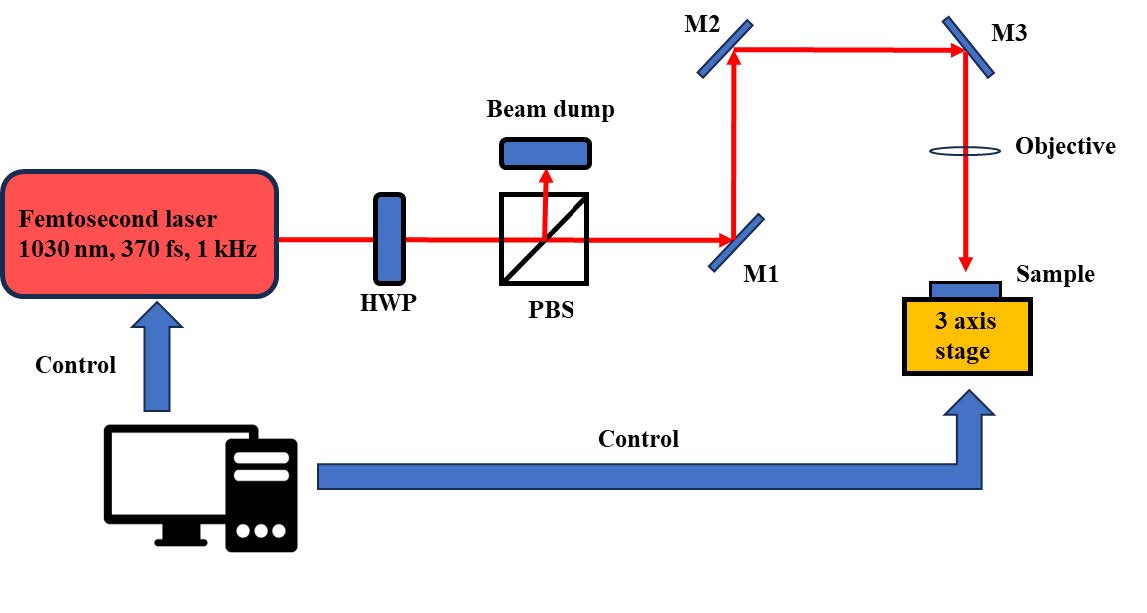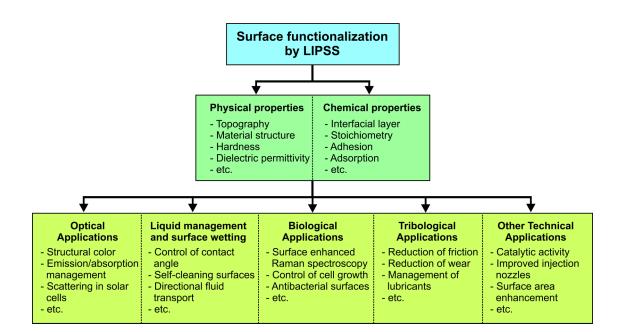Author: Balaji Baskar
Nanostructured surfaces are of prime importance in the current age in terms of creating functionalities for optics, tribology, medicine, and energy harvesting applications. Some commonly used techniques for generating these structures are chemical and plasma etching, chemical and physical vapor deposition, sputtering, and various lithography techniques like electron beam, focused ion beam, optical, etc. However, these techniques are time-consuming, costly, require a clean room environment, and are often limited to semiconductors. A cheaper alternative for generating these nanostructured patterns on materials is the formation of laser-induced periodic surface structures (LIPSS). LIPSS (also known as nanoripples) are generated on almost all materials (metals, semiconductors, dielectrics) upon irradiation of the surface with linearly polarized ultrafast laser pulses.

Fig 1.1. Experimental schematic of the LIPSS setup
A femtosecond laser at 1030 nm, 370 fs pulses at 1 kHz repetition rate (Satsuma HP3, Amplitude) was attenuated using a variable attenuator comprised of a half-wave plate and a polarizing beam splitter and focused down to ~ 18 μm spot size by a 75 mm focusing objective lens on the sample. At different z depths, the sample is scanned in XY directions using a high-precision motion controller (Newport XPS RL). There are multiple factors like laser irradiation parameters, polarization direction, and laser scanning speed and direction, sample properties that decide the periodicity of these nanoripples. LIPSS can be broadly classified into two based on the periodicity, Low Spatial Frequency LIPSS (LSFL) with period ~ λ of the laser and High Spatial frequency LIPSS (HSFL) with period < λ/2.

Figure 1.2.
AGUI lab at Texas A&M University is focused on producing LIPSS on materials like brass and stainless steel to mitigate cavitation erosion damages since they have significant underwater applications like boat impellers. To simulate cavitation events, we have created an in-house cavitation setup that can generate cavitation bubbles by focusing high-powered nanosecond laser pulses inside water. Our experimental results showed that the surface damage caused by cavitation events is less pronounced when the surface is modified by LIPSS compared to the untreated surface as shown in Figure 1.3.

Fig 1.3. Optical microscope images of the LIPSS-scribed and untreated brass samples from 0 to 50k cavitation events.
